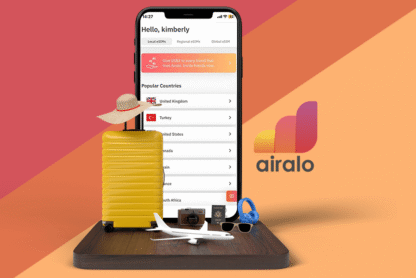1. An Introduction to DFDS
In the ever-moving world of maritime transport and logistics, one name stands out: DFDS. With roots that stretch back to 1866, DFDS has evolved from a Danish steamship company into a pan-European powerhouse in passenger ferry services, freight ferry operations, and road and rail logistics.
What makes DFDS compelling is its dual role: on one hand, enabling people to travel across seas through ferry routes and mini-cruises, and on the other, enabling goods to flow seamlessly by combining sea, road, and rail transport. Their mission can be summed up as “moving goods and people since 1866.”
In this blog, we’ll explore the history, services, operations, sustainability agenda, challenges, and future outlook of DFDS.
2. The Rich Heritage of DFDS
DFDS traces its origins to December 11, 1866, when Danish financier Carl Frederik Tietgen merged three Danish shipping companies to form what became DFDS. Over time, the company expanded to become one of the largest ship-owning firms in the world by the late 1880s.
Throughout its history, DFDS has adapted to vast historical changes — from the steamship era to diesel engines, and later, the introduction of roll-on/roll-off cargo ships that revolutionized sea freight. The company also expanded into passenger travel, combining functionality and leisure to serve millions of travelers each year.
This long heritage has made DFDS a symbol of stability, deep maritime expertise, and innovation in European transport. It stands today not merely as a ferry operator, but as a crucial part of the continent’s logistics backbone.
3. What DFDS Does – Services and Operations
At its core, DFDS operates two major service categories: passenger ferry travel and freight/logistics solutions.
Passenger Services
The passenger division of DFDS provides ferry crossings, mini-cruises, and short breaks across Europe. Their routes cover connections between the UK, France, Scandinavia, and the Baltic region, among others. These journeys combine convenience and comfort, offering travelers the experience of a “floating hotel.”
For passengers, DFDS offers not only a means of travel but also an enjoyable and scenic journey across some of Europe’s most iconic waterways.
Freight and Logistics
The freight side of DFDS integrates sea routes with road and rail transport, creating a smooth and efficient supply chain across Europe. The company’s operational strategy revolves around connecting sea, road, and rail routes to offer seamless logistics solutions.
This multimodal approach allows DFDS to handle complex freight operations, serving industries that require timely and reliable transport of goods. By combining maritime and land logistics, DFDS has established itself as a critical link in European trade.
Network and Scale
DFDS operates in over 20 countries, carrying millions of passengers annually and transporting vast volumes of freight across the continent. Its wide-reaching network makes it one of Europe’s most integrated transport companies.
4. Strategy and Sustainability — Why DFDS Stands Out
DFDS is not only focused on moving goods and people efficiently — it is also committed to sustainability, innovation, and long-term business responsibility.
Strategic Positioning
By combining different transport modes, DFDS offers integrated logistics solutions. This allows customers to simplify their transport processes and save on both time and cost. The company has expanded its network through strategic acquisitions and partnerships, enabling it to serve new regions and industries.
Because DFDS spans both passenger and freight transport, it benefits from business diversification — balancing between leisure travel and commercial logistics, which helps reduce exposure to market fluctuations.
Sustainability Commitments
A major part of DFDS’s modern strategy is sustainability. The company has set an ambitious goal of achieving net-zero greenhouse gas emissions by 2050. Its integrated transport system—combining sea, road, and rail—reduces overall emissions compared to single-mode transport such as road or air freight.
DFDS is also investing in cleaner fuels, energy-efficient vessels, and technology to monitor and optimize environmental performance. This focus not only benefits the planet but also strengthens the company’s position as a responsible industry leader.
Why It Matters
In an era of climate change and regulatory pressure, the steps taken by DFDS reflect a forward-thinking approach. Both corporate customers and passengers increasingly value sustainability, and DFDS’s proactive stance ensures it remains competitive and respected across markets.
5. Challenges and Opportunities Ahead for DFDS
Every major company faces challenges — and DFDS is no exception. Yet, within those challenges lie opportunities.
Challenges
- Fuel and Emissions Costs: The shipping industry faces stricter emissions regulations and fluctuating fuel prices. DFDS must continue investing in cleaner technologies and efficient fleet management.
- Competition and Market Pressure: The ferry and logistics sectors are highly competitive. DFDS must maintain superior service quality and pricing.
- Geopolitical and Border Risks: With cross-border operations across Europe, DFDS must adapt quickly to customs, trade, and political changes that can affect routes and schedules.
Opportunities
- Growth in Regional Logistics: As Europe focuses on near-shoring and regional supply chains, DFDS stands to benefit from increased freight volumes.
- Digitalization: By enhancing real-time tracking, data analytics, and route optimization, DFDS can improve customer experience and operational efficiency.
- Green Shipping Leadership: Companies are seeking eco-friendly transport partners, creating an opportunity for DFDS to lead in sustainable logistics.
- Expanding Routes: DFDS can strengthen its market by adding new ferry routes and logistics hubs to support European and global trade.
6. The Road Ahead – The Future of DFDS
Looking forward, several key themes define the future of DFDS:
- Fleet Modernization: Replacing older vessels with more fuel-efficient and low-emission ships.
- Digital Transformation: Leveraging technology to enhance tracking, booking, and logistics management.
- Customer-Centric Solutions: Ensuring both passengers and freight customers experience reliability, comfort, and value.
- Sustainability Leadership: Achieving the company’s 2030 and 2050 environmental goals through measurable progress.
- Market Expansion: Entering new routes and logistics partnerships to expand DFDS’s network.
The maritime and logistics industries are evolving rapidly, but DFDS’s adaptability and experience position it strongly for the decades ahead.
Conclusion
From its beginnings as a 19th-century Danish steamship company to its role today as a leading European transport network, DFDS has charted a remarkable journey. It combines ferry travel, freight logistics, and sustainability into one coherent strategy that connects people and goods across continents.
As the global economy moves toward greener and more integrated supply chains, DFDS is not just keeping pace — it is helping shape the future of transport. Whether you’re planning a ferry trip across Europe or seeking efficient logistics solutions, DFDS stands as a trusted name with over 150 years of expertise.











